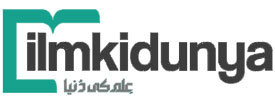-
 Home
Home
-
 News
News
Latest Educational News Stories
Daily update of all national, international news, picture stories, college / university announcements and educational events.
-
 Colleges
Colleges
Pakistan's Largest Database of Colleges and Universities
Explore Largest Directory of Private and Govt. Colleges, Universities and find best institute for your future Education.
-
 Courses
Courses
-
 Admission
Admission
-
 Lectures
Lectures
-
 Online Test
Online Test
Short Question
- 9th Class Physics Short Questions
- 9th Class Chemistry Short Questions
- 9th Class Math Short Questions
- 9th Class Biology Short Questions
- 9th Class Computer Short Questions
- 9th Class English Short Questions
- 10th Class Physics Short Question
- 10th Class Chemistry Short Question
- 10th Class Math Short Question
- 10th Class Biology Short Question
- 10th Class Computer Short Question
- 10th Class English Short Question
-
 Past Papers
Past Papers
-
 Date Sheets
Date Sheets
-
 Results
Results
Exam Results 2024
Check online Results 2024 Matric Inter BA BSc B.Com MA MSc M.Com CSS PCS MCAT ECAT of all educational boards and universities in Pakistan
-
 Study Abroad
Study Abroad
Study Abroad Programs and Opportunities for Pakistani Students
Explore free study abroad search to find programs, consultants, events to study in USA, UK, Australia, China, Malaysia and many others.
-
 Jobs
Jobs
-
 Tutors
Tutors
-
 More
More
-
 Apps
Apps
8th Class Computer Science Ch. 5 Online Test

8th Class English Medium Subjects
8th Class Urdu Medium Subjects
MCQ's Test For Chapter 5 "8th Computer Science Chapter 5 Test"
Try The MCQ's Test For Chapter 5 "8th Computer Science Chapter 5 Test"
-
Total Questions10
-
Time Allowed10
Question # 1
Represents the imput and output instructions i a flowchart.
Question # 2
What is the full form of CT.
Question # 3
Sometimes we want to repeat an action again and again which is called.
Question # 4
A collection of instructions to solve a problem simply described in plain english is called.
Question # 5
The Start/Stop box is represented by;
Question # 6
------- tell us to take the right path based onsome test.
Question # 7
The dicision box is represented by.
Question # 8
Used to connect varios sections of a flowchart.
Question # 9
If some of the instructionsin an alorithm are executed based on some condition, the flow execution is called.
Question # 10
------- is the placement of one object with in another object.
Top Scorers Of Chapter 5 "8th Computer Science Chapter 5 Test" MCQ`s Test
-
A Ahmad News 14 - Nov - 2024 00 Min 11 Sec 10/10 -
G Gaming time 9.9 05 - Oct - 2024 00 Min 28 Sec 10/10 -
S Sannia Moazam 19 - Sep - 2025 01 Min 28 Sec 9/10 -
T Tanzeela Butt 02 - Dec - 2024 03 Min 01 Sec 9/10 -
A Abdul Muneem 18 - Nov - 2024 01 Min 13 Sec 8/10 -
A Abdul Fattah 10 - Jan - 2025 01 Min 39 Sec 8/10 -
H hassaan Eshaal 23 - Sep - 2024 01 Min 04 Sec 7/10 -
M Mutee Rasool 14 - Dec - 2024 01 Min 12 Sec 7/10 -
M Muzamil Habib 13 - Dec - 2024 01 Min 40 Sec 6/10 -
M Mudassir Naseer 31 - Aug - 2025 01 Min 28 Sec 2/10
8th Computer Science (English Medium) Chapter 5 Important MCQ's
| Sr.# | Question | Answer |
|---|---|---|
| 1 | The dicision box is represented by. |
A. An oval
B. A parallelogram
C. A dimond
D. Rectangale
|
| 2 | It is important to learn ............. also for the developmentof computer programs. |
A. Algorithm
B. Flowchart
C. Computational thinking
D. All of these
|
| 3 | ------- is the placement of one object with in another object. |
A. Hatliing
B. Flowchart
C. Nesting
D. None of these
|
| 4 | In Algorithm, we use repeat or repeat forever to represent. |
A. Sequence
B. Selection
C. Loop
D. All of these
|
| 5 | A finite sequence of activities to be processed for getting a task done from a given input. |
A. Flowchart
B. Algorithm
C. Computational thinking
D. All of these
|
| 6 | Developing a step-by-step approach for solving a problem is. |
A. Decomposition
B. Abstration
C. Alogorithm Design
D. Pattern Recognition.
|
| 7 | The Start/Stop box is represented by; |
A. An oval
B. A parallelogram
C. A rectangale
D. A diamond
|
| 8 | Focusing only n the important details, while ignoring irrelevant information is |
A. Decomposition
B. Abstraction
C. Alogorithm Design
D. Pattern Recognition
|
| 9 | Represents the imput and output instructions i a flowchart. |
A. Parallelogram
B. Circle
C. Diamond
D. Rectangle
|
| 10 | Sometimes we want to repeat an action again and again which is called. |
A. Deletion
B. Copying
C. Solution
D. Iteration
|








.jpg)
























Share your comments & questions here
No comments yet. Be the first to comment!